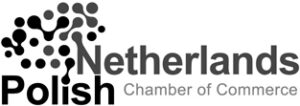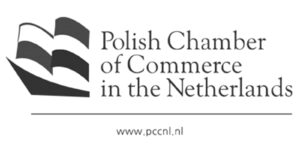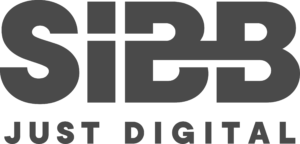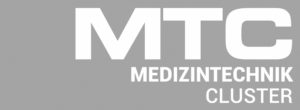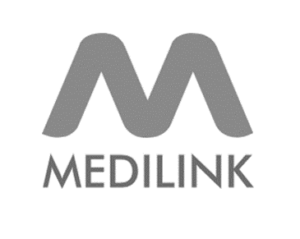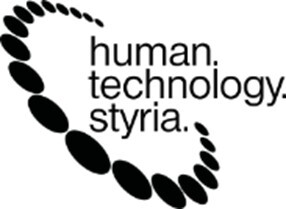Enhancing Accuracy, Connectivity and Efficiency in a wide range of industries
AI can bring human-like decision-making and awareness to the IoT environment, which can lead to increased efficiency and improved processes. For example, AI can help in predictive maintenance of machines, which can save companies millions of dollars in repair costs. It can also help in optimizing energy consumption in buildings, which can reduce energy bills and carbon footprint.
AI is becoming increasingly important in the Internet of Things (IoT) ecosystem because it can help to extract insights from the vast amounts of data generated by connected devices. AI can enable IoT devices to learn from their environment and make decisions based on that learning, without human intervention.
AI key advantages
One of the key advantages of AI in IoT is that it can help to automate processes and improve efficiency. For instance, AI can predict machine failures, enabling proactive maintenance actions. This can help to reduce downtime and improve overall productivity.
AI can also help to improve the accuracy of data analysis in IoT. By using machine learning algorithms, AI can identify patterns in data that would be difficult for humans to detect. This can help to identify trends and anomalies, enabling businesses to make more informed decisions.
There are several different types of AI:
By enabling machines to learn from their environment and make decisions based on that learning.
- Machine Learning
- Deep Learning
- Reinforcement Learning
Internet of Things key advantages
The Internet of Things (IoT) is a network of physical objects embedded with sensors, software, and other technologies to connect and exchange data with other devices and systems over the internet. The main purpose is to enable the collection data processing and analysis of large amounts of data from various sources to provide insights and improve decision-making.
IoT devices can sense and monitor various environmental factors such as temperature, humidity, and pressure, and can also track and analyse human behaviour, movement, and interactions with the environment.
One of the key benefits of IoT is its ability to automate processes and reduce human intervention.
IoT applications can be built from devices that sense real-world conditions and then trigger actions to respond in some way. Often, the response includes steps that influence the real world.
Physical objects are embedded with sensors and actuators that receive signals from sensors and then do something in response to those changes.
To function effectively, IoT devices need to be connected to a network that can transmit data between them and to other systems. This can be done using various wireless and wired communication technologies such as Wi-Fi, Bluetooth, Zigbee, and cellular networks. The data collected by IoT devices can then be stored and processed using cloud computing and big data analytics technologies to derive insights and enable smarter decision-making.
AI and IoT key advantages
One of the main benefits of combining AI and IoT is predictive maintenance. IoT devices can collect large amounts of data from machines and equipment, which can then be analysed by AI algorithms to predict when maintenance is needed. This can help prevent downtime and reduce repair costs.
Another area where AI and IoT intersect is in the field of smart homes. IoT devices such as smart thermostats, lighting systems, and security cameras can be controlled by AI algorithms to optimize energy usage and enhance security.
AI and IoT also have the potential to improve healthcare. IoT devices such as wearables and medical sensors can collect data on a patient’s health, which can then be analysed by AI algorithms to detect early signs of disease or monitor chronic conditions. This can lead to earlier diagnosis and better treatment outcomes.
Summary & Examples
- Improved Efficiency
AI-powered IoT devices can automate routine tasks and processes, enabling businesses to operate more efficiently. For example, smart factories can use AI to optimise production lines, reducing waste and improving productivity. Similarly, smart homes can use AI to learn the behaviour of occupants and automatically adjust settings to maximise energy efficiency.
- Enhanced Decision-Making
AI can process vast amounts of data from IoT devices, providing valuable insights and enabling better decision-making. For example, in healthcare, AI can analyse patient data from wearable devices to identify potential health issues before they become serious. In agriculture, AI can analyse data from sensors to optimise crop yields.
- Increased Safety and Security
AI can enhance safety and security in a variety of contexts. For example, in smart cities, AI can analyse data from traffic sensors and cameras to optimise traffic flow and reduce accidents. In industrial settings, AI can monitor equipment and detect potential safety issues before they become serious. Similarly, in cybersecurity, AI can analyse network traffic and identify potential threats.
- Personalisation
AI can enable highly personalised experiences for users of IoT devices. For example, in retail, AI can analyse customer data to provide personalised recommendations and offers. Similarly, in healthcare, AI can analyse patient data to provide personalised treatment plans.
.
Challenges in Integrating AI with IoT
Integrating Artificial Intelligence (AI) with the Internet of Things (IoT) presents several challenges that must be addressed for successful implementation.
Despite the potential benefits, integrating AI with IoT is not without its challenges. One of the biggest challenges is the sheer volume of data that is generated by IoT devices. AI algorithms require large amounts of data to learn and make accurate predictions. Another challenge is the security of IoT devices, which can be vulnerable to cyber-attacks.
Here are some of the major challenges:
- Data Management
One of the main challenges of integrating AI with IoT is managing the vast amount of data generated by IoT devices. IoT devices generate a huge amount of data, and AI algorithms require large amounts of data to train and improve their accuracy. Therefore, managing and storing this data in a way that is easily accessible to AI algorithms is crucial.
- Security
Security is another major challenge in integrating AI with IoT. IoT devices are often deployed in unsecured environments, making them vulnerable to cyber-attacks. AI algorithms that are used to process the data generated by IoT devices must also be secured against attacks. Therefore, implementing robust security measures is critical to ensure the integrity of the data and the system.
- Interoperability
IoT devices are often developed by different manufacturers, using different protocols and standards. This can make it difficult to integrate these devices with AI algorithms. Interoperability issues can prevent data from being shared between devices, limiting the effectiveness of AI algorithms. Therefore, developing common standards and protocols for IoT devices is essential for successful integration with AI.
- Power Consumption
IoT devices are often battery-powered, making power consumption a critical factor in their design. AI algorithms can be computationally intensive, requiring significant amounts of power to run. Therefore, developing energy-efficient AI algorithms that can run on low-power devices is an important consideration for integrating AI with IoT.
- Cost
The cost of implementing AI with IoT can be prohibitive, particularly for small and medium-sized enterprises. The hardware and software required to implement AI algorithms can be expensive, and the cost of implementing security measures can also be significant. Therefore, finding cost-effective solutions is crucial for successful integration of AI with IoT.
Applications examples of AI in IoT
- Smart Homes
Smart homes are becoming increasingly popular, and AI plays a crucial role in their development. AI-powered smart devices that can learn from the user’s behaviour and preferences, adjusting the temperature, lighting, and other settings to suit their needs. For instance, a smart thermostat can learn when a homeowner is likely to be at home and adjust the temperature, accordingly, saving energy and reducing costs.
- Predictive Maintenance
AI can help to predict when machines and equipment are likely to fail, reducing downtime and maintenance costs. By analysing data from IoT sensors, AI algorithms can identify patterns and anomalies that indicate potential issues. This enables businesses to take proactive measures to prevent failures before they occur.
- Healthcare
AI-powered IoT devices are transforming the healthcare industry, making it easier to monitor patients remotely and provide personalised care. Wearable medical devices can track vital signs and send alerts to healthcare providers if there are any concerns. AI algorithms can analyse this data to identify patterns and predict potential health issues before they become serious.
- Smart Cities
AI-powered IoT devices are helping to create smarter, more efficient cities. For instance, self-driving cars, sensors can monitor traffic flow and adjust traffic lights to reduce congestion. Smart waste management systems can optimise collection routes, reducing costs and improving efficiency.
- Agriculture
AI-powered IoT devices are helping farmers to improve crop yields and reduce waste. Sensors can monitor soil moisture levels, temperature, and other factors, enabling farmers to optimise irrigation and fertiliser use. AI algorithms can analyse this data to identify patterns and predict potential issues, such as pests or disease outbreaks.
Future Perspectives of AI in IoT
As the number of IoT devices and sensors continues to grow, the role of AI in IoT is becoming increasingly important. AI can provide valuable insights into the vast amounts of data generated by IoT devices, enabling businesses to make more informed decisions and improve their operations.
- Predictive maintenance
By analysing data from sensors on machines and equipment, AI algorithms can identify potential problems before they occur, allowing maintenance teams to take proactive measures to prevent downtime and reduce costs.
- Energy efficiency
By analysing data on energy usage patterns, AI algorithms can identify opportunities to reduce consumption and optimise energy usage, leading to significant cost savings for businesses and reduced carbon emissions.
- Safety in industrial settings
By analysing data from sensors on equipment and machinery, AI algorithms can detect anomalies that may indicate a safety hazard, allowing workers to take corrective action before an accident occurs.
Conclusion
Integration of Artificial Intelligence (AI) and Internet of Things (IoT) technologies has brought and will bring significant benefits to various industries.
AI technologies such as decision trees, linear regression, machine learning, support vector machines, and neural networks have been used in IoT cybersecurity applications to identify threats and potential attacks.
IoT initiatives involve ai capabilities and solutions that rely on sensor deployments and associated datasets. The centrality of data is at the foundation of IoT ecosystems. The Internet of Robotic Things (IoRT) has also emerged because of the integration of AI and IoT technologies.
Introducing AI into IoT applications has created significant opportunities for innovations in automation and asset tracking domains. Companies and labour-intensive corporations are investing in autonomous working environments with less human interaction, and the demand for AI and context-aware systems has drastically increased.
In the future, we can expect to see AI and artificial intelligence of things IoT continue to converge, leading to the development of new applications and services that we can’t even imagine today.
As AI algorithms become more sophisticated and IoT devices become more ubiquitous, the potential for innovation is virtually limitless.
Here the related Article by deviceauthority:

